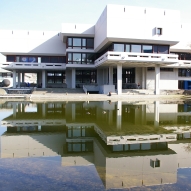Zusammenfassung
Background: Diabetes-associated Kidney Disease (DKD) is a common comorbidity in patients with type 2 diabetes. The present study investigates whether daytime sleeping duration in patients, ill with type 2 diabetes, is associated with DKD. Methods: A total of 733 outpatients of the cross-sectional baseline survey of the DIACORE study were analyzed with respect to their self-reported daytime ...
Zusammenfassung
Background: Diabetes-associated Kidney Disease (DKD) is a common comorbidity in patients with type 2 diabetes. The present study investigates whether daytime sleeping duration in patients, ill with type 2 diabetes, is associated with DKD. Methods: A total of 733 outpatients of the cross-sectional baseline survey of the DIACORE study were analyzed with respect to their self-reported daytime sleeping duration, assessed by a standardized questionnaire. DKD was defined as eGFR <60 ml/min/1.73 m(2) and/or urinary albumin-to-creatinine-ratio (UACR) > 30 mg/g. Results: Mean daytime sleeping duration was 17 +/- 27 min. With increasing daytime sleeping duration a statistically significant decrease in eGFR (p = 0.002) and increase in UACR (p < 0.001) were found, respectively. Prevalence of DKD was significantly higher in patients with longer daytime sleeping duration (31% in patients not napping, 40% in patients napping less than 30 min, 47% in patients napping 30-60 min, 56% in patients napping 60 min or more; p = 0.001). After accounting for known modulators (Age, sex, BMI, waist-hip-ratio, systolic and diastolic blood pressure, physical activity, diabetes duration, HbA1c, homeostasis model assessment (HOMA-Index), nighttime sleeping duration, apnea-hypopnea-index (AHI), Epworth Sleepiness Scale (ESS)), longer daytime sleeping duration was significantly associated with impaired eGFR [B (95% CI) = -0.05 (-0.09; 0.00), p = 0.044] and increased UACR [B (95% CI) = 0.01 (0.01; 0.02), p < 0.001], respectively. Conclusion: Increased daytime sleeping duration is significantly associated with reduced eGFR and higher UACR, independent of known modulators of DKD. The direction of this relationship remains unclear. (c) 2018 Elsevier B.V. All rights reserved.





 Altmetric
Altmetric